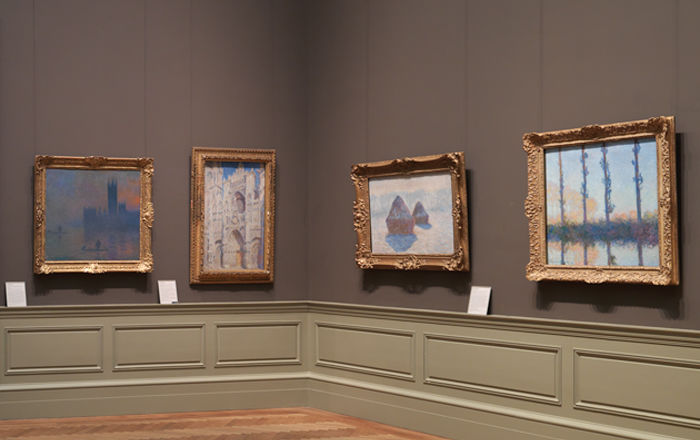The Artist: One of eleven siblings, Christen Købke was the son of Peter Berend Købke (1771–1843) and his wife, Cecilie Margrethe Petersen (1778–1867). Peter supported his large family as a baker; following a government appointment in 1818 or 1819, they lived at the Kastellet, Copenhagen’s seventeenth-century defensive fortress complex. The Napoleonic Wars devastated Copenhagen, and in the period of rebuilding that ensued, a middle-class culture of restrained refinement flourished. Twelve-year-old Christen began drawing lessons under Christian August Lorentzen (1749–1828) and, after his death, spent four years studying with Christoffer Wilhelm Eckersberg (1783–1853), director of the Royal Danish Academy of Art. Part of a generation of talented young painters, Købke was one of Eckersberg’s most promising pupils. He exhibited regularly at the Academy and in 1838 traveled via Germany to Italy, returning to Denmark in 1840. From that point on his, success was measured. Owing to his early death from pneumonia in 1848, Købke’s output was limited. His oeuvre consists of some two hundred paintings, primarily portraits and landscapes, that epitomize the forthright simplicity, clean lines, and crisp light of the Danish Golden Age of painting.
The Sitter: This charming, informal portrait depicts the artist’s sister Sophie Susanne Dorothea Købke, who was born on May 3, 1807, in Copenhagen, and died there at the age of forty-six on July 15, 1853. Sophie married Frederik Christopher Krohn (1806–1883), a Danish sculptor and medalist, on May 3, 1835. They had six children, Pietro Købke Krohn (1840–1905), Johan Jacob Krohn (1841–1925), Herman Freund Krohn (1843–1877), Mario Krohn (1846–1872), Sophie Christine Cecilie Krohn (1847–1916), and Frits Sophus Krohn (1849–1850).
The family was tight-knit. After the deaths of Christen Købke in 1848 and his widow, Susanne Cecilie Købke (1810–1849), Sophie and Frederik adopted their children, Hans Peter Carl Købke and Juliane Emilie Købke. Later, after Sophie’s death in 1853, Frederik married Susanne Cecilie’s sister, Emilie (1812–1880).[1]
The Painting: Painted in 1830, Sophie is shown standing full-length, arms crossed, leaning with her left elbow and right hand on the edge of a deep windowsill. She wears a high-waisted black dress with puffed short sleeves. A beaded (pearl?) necklace and earrings adorn her head of elaborate blond curls. The room is furnished in the Biedermeier taste and illuminated softly from the right, by light entering through the window. In the corner behind Sophie, a guitar rests on a sofa, and a simple wooden table is covered by a green tablecloth. Before her is a highly polished low chest of drawers supporting a potted plant. The carpet, in a blue-gray that matches the sofa upholstery, is edged by a geometric pattern woven in orange. The setting is the Kastellet’s parlor, or hall. Sophie and the space she occupies exemplify the casual yet eminent respectability of bourgeois life in Copenhagen; its sober yet warm sensibility is characteristic of Købke.
The painting served a dual function: it is both an independent portrait and the modello for the considerably larger likeness of another sibling,
Conradine Feilberg, née Købke, in the Parlor of the Citadel, about 1830–32.[2] Købke did not paint many full-length portraits, yet despite the closeness in composition,
Sophie is rather more painterly than
Conradine, and Sophie’s gaze meets the painter/viewer’s, while Conradine is more slickly finished and looks away. Købke generally preferred the direct gaze, as evinced by the majority of his portraits, for example the portrait of another sibling,
Valdemar Hjartvar Købke (The Met
1990.233).
Asher Ethan Miller 2025
[1] See Edvard Nørregård-Nielsen in Nørregård-Nielsen and Monrad 1996, pp. 98–99.
[2] Private collection (Nørregård-Nielsen 2006, p. 818, no. 45, ill. p. 153).

